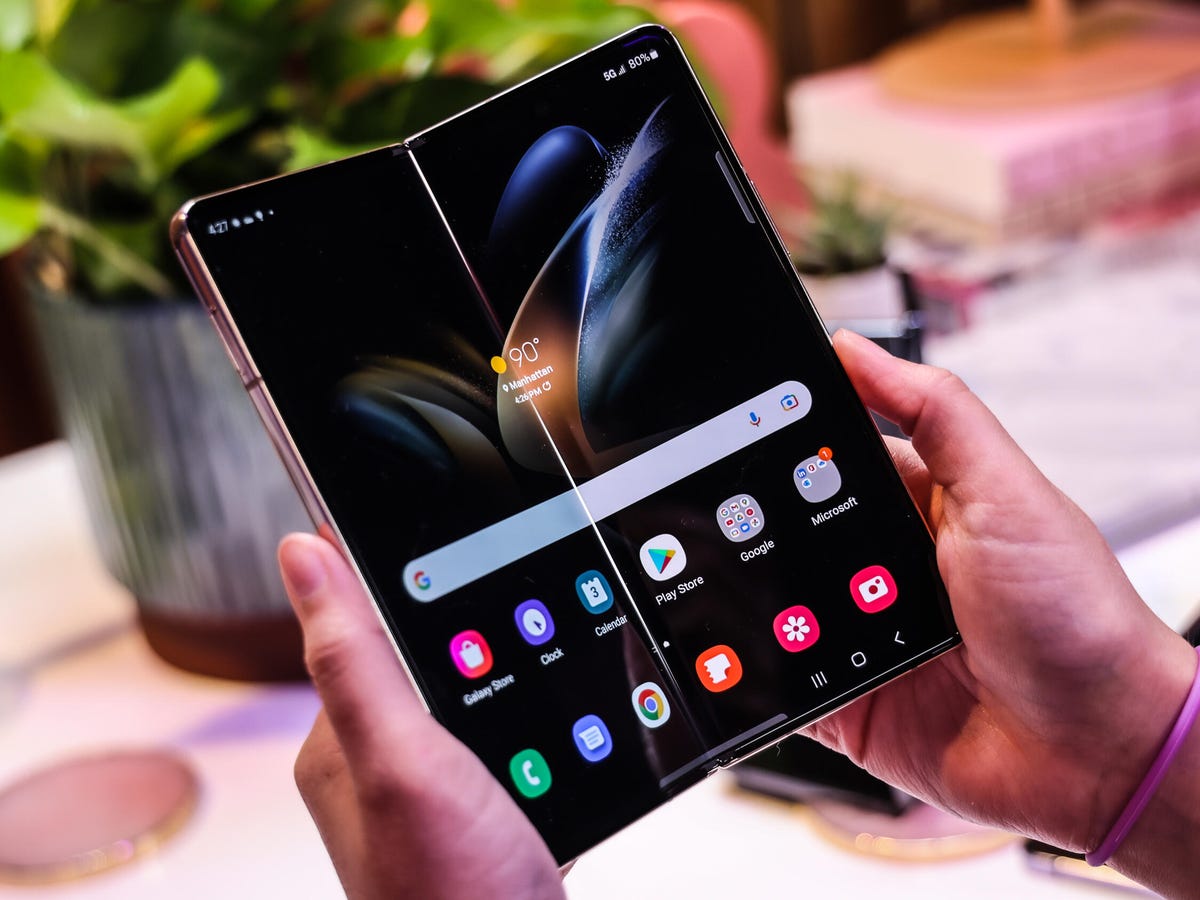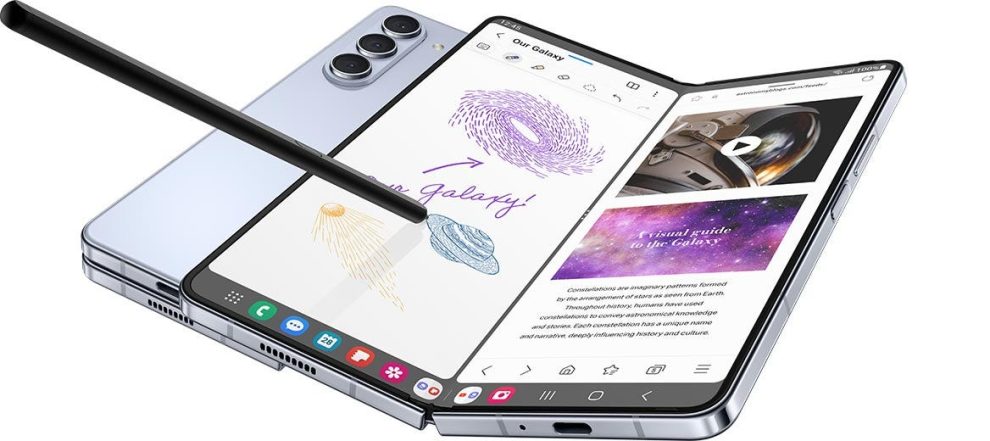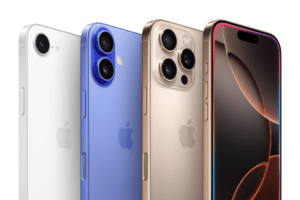The smartphone industry has been trapped in a design stagnation for over a decade, dominated by cookie-cutter glass rectangles. However, with the advent of foldable displays and hinges, companies like Samsung, Motorola and Oppo are pioneering a new era of versatile, adaptable smartphones that pack the power of a tablet into a portable form factor.
A Brief History of Foldable Phone Concepts
The core concepts behind foldable displays have existed for decades, with prototypes peppering the tech landscape as far back as the early 2000s. However, the lack of durable display and hinge technology made foldables more of a pipe dream than a viable consumer product.
This changed in 2019 when Samsung shattered industry perceptions with the launch of the Galaxy Fold. Despite some early durability setbacks, the Galaxy Fold sparked a foldable revolution, proving that the technology could deliver on its lofty promises. Its success paved the way for a new wave of foldable offerings from both Samsung and its competitors.
Leading the Charge: Samsung’s Foldable Offerings
When it comes to driving mainstream foldable adoption, Samsung reigns supreme. The company currently leads the still-nascent market with two product lines catering to different users:
Samsung Galaxy Z Fold Line – Unfold a Big Screen Experience

The Galaxy Z Fold devices build on the ethos of the original Galaxy Fold, unraveling from phones into small tablets. The latest Galaxy Z Fold4 refines the formula further with an upgraded hinge, sleeker design, enhanced productivity features and top-tier performance.
Flagship-level specs coupled with a spacious 7.6″ unfolded Dynamic AMOLED display makes the Galaxy Z Fold4 an productivity and creative powerhouse. The nearly bezel-less screen and flexible form factor also enable new multitasking capabilities and usability modes not possible on standard slab smartphones. Whether unwinding with a movie or working on complex documents, the Z Fold line delivers where it counts.
Samsung Galaxy Z Flip Line – The Future is Flexible

While the Z Fold umbrellas the “small tablet” style foldables, Samsung’s stylish Galaxy Z Flip4 adopts a more nostalgic flip phone aesthetic. Don’t let its retro looks fool you though – when unfolded, users are treated to an edge-to-edge 6.7” Dynamic AMOLED canvas, sans any distracting notches or cutouts. This fusion of old and new, coupled with a more pocketable footprint, injects a healthy dose of fun and flexibility into a category traditionally obsessed with productivity.
With powerful internals, refined build quality and clever multitasking features tailored for its folding form, the Z Flip4 brings unique talents beyond just being Instagram eye candy. Its versatility allows owners to truly “use it their way”, standing upright for hands-free selfies or split for a dual square display.
Foldable Offerings Beyond Samsung
Other Android brands have followed Samsung’s lead in staking their own claim in the expanding foldables space:
Oppo Find N – Newcomer with Fresh Ideas

The Oppo Find N shakes up conventions with a wider landscape-oriented display and unique inwards folding design. When closed, the Find N has minimal screen creasing compared to outwards folding rivals. Combined with polished software that intelligently adapts to its form shifts, the Find N is surprisingly refined and competitive for a first-generation device.
Motorola Razr (2022) – Iconic Flip Makes a Comeback

Lenovo successfully revitalized the legendary mid 2000’s Motorola RAZR with a new breed of Motorola Razr flip phones featuring vertically folding displays encased in nostalgia-soaked designs. The 3rd-gen Razr released in 2022 steps up its game further with much improved performance, build quality and cameras while retaining its head-turning style.
What Makes Foldables the Future of Smartphones?
Foldable displays represent one of the biggest leaps in recent smartphone history, unlocking game-changing versatility not possible with fixed glass slabs. But what exactly makes them so enticing?
Tablet-Sized Screens in Pocketable Packages
The promise of tablet-like real estate that can fold into a compact Rectangle is manna from heaven for creators, multitaskers and media consumers. Fewer UI compromises or juggling multiple devices means getting more done with less hassle.
Adaptive Experiences & Versatile Forms
Standard candy bar phones shoehorn users into productivity-driven experiences, but foldables provide more room to tailor device modes for specific needs. Unfurling into a tablet to work or watch movies and folding down for easier portability or game controls – it’s usability on your terms.
More Immersive Gaming & Entertainment
Marrying refined smartphone hardware with additional display acreage sets the stage for more console and PC-like gaming and cinematic entertainment compared to non-folding mobiles.
Challenges Facing Foldable Adoption
As revolutionary as foldable phones are, mainstreaming the form factor faces some adoption barriers:
Durability & Long Term Reliability Concerns
Complex hinge mechanisms paired with bending displays means more vulnerability to wear & tear issues compared to slabs. However, rapid improvements in materials and engineering mitigates this.
Software & App Optimization Still Catching Up
Third party apps need further tweaking to account for radical form shifts and unconventional aspect ratios intrinsic to foldables. But Android 12L and planned updates aim to improve folding optimizations.
High Costs…For Now
Economies of scale have yet to kick in for foldable components, forcing premium price tags. But reports of cheaper models from Samsung, Oppo and others could democratize foldables.
What Does the Future Hold for Foldables?
Foldables are still in their infancy with plenty of headroom for innovation. Here’s what the future likely holds:
- Wider range of form factors – tablets, rolls, slides
- Durable glass displays instead of plastic
- Hinges and folding mechanisms will keep improving
- Better optimized software experiences
- More affordable models to reach mass market
While traditional candy bar designs aren’t going extinct anytime soon, foldables represent the biggest leap in mobile evolution yet. As the technology continues maturing, their versatility and adaptability will ultimately transform smartphones as we know them.
















Add Comment